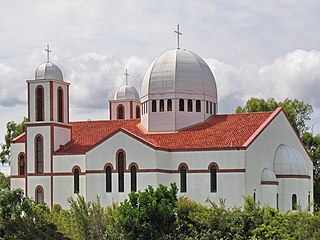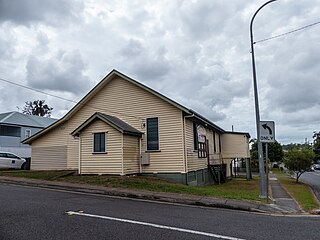
Sandgate is a northern coastal suburb in the City of Brisbane, Queensland, Australia. In the 2021 census, Sandgate had a population of 4,926 people.

Albion is an inner north-eastern suburb in the City of Brisbane, Queensland, Australia. In the 2021 census, Albion had a population of 3,446 people.

Aspley is a suburb in the City of Brisbane, Queensland, Australia. In the 2021 census, Aspley had a population of 12,871 people.

Geebung is a suburb in the City of Brisbane, Queensland, Australia. In the 2021 census, Geebung had a population of 4,850 people.

Wooloowin is a suburb in the City of Brisbane, Queensland, Australia. In the 2016 census, Wooloowin had a population of 3,938 people.
The Division of Lilley is an Australian Electoral Division in Queensland.

Bracken Ridge is a northern suburb in the City of Brisbane, Queensland, Australia. In the 2021 census, Bracken Ridge had a population of 17,488 people.

Clayfield is a suburb in the City of Brisbane, Queensland, Australia. In the 2021 census, Clayfield had a population of 10,897 people.

Nundah is an inner suburb in the City of Brisbane, Queensland, Australia. It contains the neighbourhood of Toombul. In the 2016 census, Nundah had a population of 12,141 people.

Boondall is a northern suburb in the City of Brisbane, Queensland, Australia. In the 2021 census, Boondall had a population of 9,603 people.

Brighton is a coastal northern suburb of the City of Brisbane, in the state of Queensland, in Australia. In the 2021 census, Brighton had a population of 9,664 people.

Shorncliffe is a coastal north-eastern suburb in the City of Brisbane, Queensland, Australia. It is on the shore of Bramble Bay, part of Moreton Bay. In the 2016 census, Shorncliffe had a population of 1,870 people. The suburb attracts visitors to its historic Shorncliffe pier, and Lovers Walk, a walking path along the coastline between Shorncliffe and neighbouring Sandgate.

Hendra is a suburb of the City of Brisbane, Queensland, Australia. In the 2021 census, Hendra had a population of 4,914 people.

Banyo is a northern suburb in the City of Brisbane, Queensland, Australia. In the 2021 census, Banyo had a population of 6,105 people.

Zillmere is a suburb in the City of Brisbane, Queensland, Australia. In the 2016 census, Zillmere had a population of 8,967 people.

Taigum is a northern suburb in the City of Brisbane, Queensland, Australia. In the 2016 census, Taigum had a population of 6,495 people.

Northgate is a suburb in the City of Brisbane, Queensland, Australia. In the 2016 census, Northgate had a population of 4,568 people.

Grange is a northern suburb in the City of Brisbane, Queensland, Australia. In the 2016 census, Grange had a population of 4,318 people.

Hamilton is an affluent riverside mixed-use suburb in the north-east of the City of Brisbane, Queensland, Australia. Hamilton is located along the north bank of the Brisbane River. In the 2021 census, Hamilton had a population of 8,922 people.

Wynnum West and Lindum are outer eastern suburb in the City of Brisbane, Queensland, Australia. In the 2016 census, Wynnum West including the locality of Lindum had a population of 12,292 people.





















